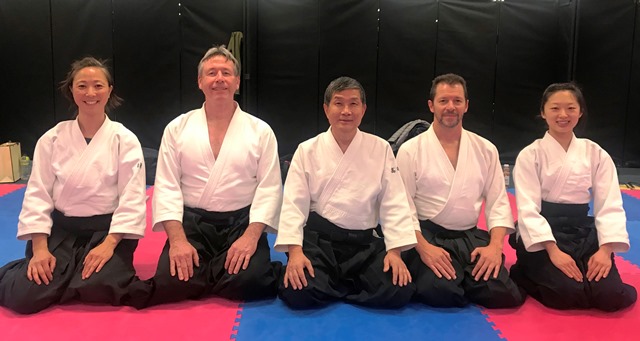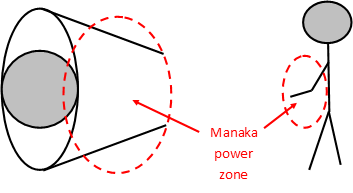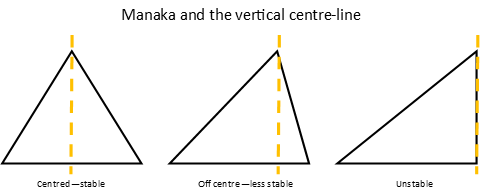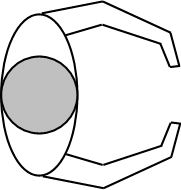
Tatsu Aikido Gokui
Secrets and Principles of Aikido
Always under construction
Aikido Techniques (JP)@
Aikido Gokui (JP)
Australia Aikido Note (JP)
AU2022
AU2019
AU2018
English Aikido Words / Glossary
Revised on
2024/6/5
![]()
Aikido Secrets
Aikido using Aiki of Aikido
Do with Aiki of Aikido
Three Principles@ Secret Moves in Basic Wazas@ Aikido Class Notes
Three Principles of Aikido [£Top] Web Author [£Top] @Web author F@Dr Takahashi Tatsuhito@@@email: tatsuaiki7@gmail.com
![]()
#
#
Three Principles of Aikido
Three Principles
of Aikido
Three Principles of Aikido and key words
@Center (Manaka)
@
@@ETanden, center of gravity, median line, power zone
@Gravity (Juryoku)
@
@@EVerticalCmass powerCweight power, gravity drop, natural fall
@Extension (Shinchoryoku)
@
@@EForearm muscle, power train, Popeye's muscles, Aiki arm, Aikiage (Aiki lift)
@(^-^)v@Dr Takahashi Tatsuhito
#
Tatsu's three principles of Aikido@ explained by Mike Smith of Sutherland Dojo, 2019
Introduction
Introduction
@Three Principles of Aikido by Tatsu-sensei
@This page describes my understanding of Tatsu-sensei's 3 Aikido principles.
These have been derived through years of analysis and study, and by observing Aikido egeniusesf through the eyes of an engineer.
@The principles can be easily understood by thinking about aikido in an engineering, mechanical or physical (i.e. physics) way.
Mike Smith 2nd dan Aikikai
August, 2019
(^-^)v
1
Centre
(Manaka)
Centre (Manaka)
The first principle is to understand that the body's centre is the focus of its strength.
Specifically, when the focus of a technique in the ecentref of Nage's body (i.e. just in front where the hands will be executing the technique), the technique can be executed with minimum strenuousness, but maximum effectiveness.
@
Imagine where your hands are when you hold a bokken in the defensive position.
This is close to where emanakaf is.
This is about tanden-height, in the centre-in front of the body.
The further the focus of a technique moves away from the vertical centre line, the weaker the technique will become, and so the more strength will need to be applied to make the technique work.
@ 
A one-handed technique executed in manaka (such as Kote gaeshi) is more effective and requires much less effort than if it is attempted at arms-length, shoulder-height and out to the side of the body.
@
The second consideration of Manaka related to posture.
A posture that maintains the centre of gravity between the feet is more stable.
When the centre of gravity is halfway between the feet, the posture is most stable.
Consider a triangle:
@ 
Diagram: Triangles representing body posture in order of decreasing stability.
(^-^)v
2
Gravity
Gravity (Juryoku)
The second principle is the principle of gravity and relates to the application of body weight through the connection with Uke to increase the power of the technique.
If Nage is well centred it is possible to transmit much body weight through the connection with Uke.
@
This is a simple idea but it is not easy to do.
The use of gravity is the second way to execute powerfully without the need to strain or be forceful.
This principle builds upon the first principle, because without manaka it is very difficult to apply gravity.
@
If Nage has good manaka, and can apply this principle, a very small vertical movement of Nagefs body will transmit significant body weight through the technique.
This means that a lot of power is generated in the technique without needing force or strength.
(^-^)v
3
Extension
(Shinchoryoku)
Extension (Shinchoryoku)
The third principle is a practical understanding of what eextensionf means, which is to generate power away from manaka without using force or strength.
It is counter-intuitive, because it involves engaging muscles that are not usually engaged.
This engagement is felt in the forearms and is created by extending out through the little and ring fingers.
Tatsu-sensei refers to this effect as using ePopeye's musclesf, because Popeye had large forearms.
Popeye demonstrates aiki-age
The biceps should be specifically disengaged, because they pull in towards Uke, which is the opposite of extension.
@
When extending, the angle of the inner angle of the elbow should open.
This is the same whether the extension is upwards like the beginning of a shomen (aiki-age) or downwards like the end of irimi-Nage.
@
The extension can be magnified by rotating the arm as it is extended, so that the right hand rotates anti-clockwise as the arm extends.
Rotation generates additional power that is out of proportion to the strength that it requires.
This movement can powerfully deflect a shomen attack and can break Uke's balance when grasped riyote-tori in seiza (kokyu-ho).
(^-^)v
Iron-ring
(Tetsuno-Wakka)
Iron-ring
If you extend both arms into your manaka (i.e. hands in front of you about belt-height), then your arms should form a circular shape.
When extending this circle is energised and very strong.
O-Sensei called this shape the eiron ring (Tetsuno-Wakka)f.
@ 
(^-^)v
#
Tatsu's three principles of Aikido@ explained by Paul Parrish of Sutherland Dojo, 2022
Three principles of Aikido
Paul Parrish 3rd dan Aikikai
of Sutherland Dojo
Three principles of Aikido
Recently in Sydney we welcomed back a friend from Japan, Dr Takahashi Tatsuhito 7th Dan Aikikai better know as Tatsu.
Tatsu trained with us at Sutherland dojo between 2011 and 2017 and influenced every one there with his thoughtful insights into the practice of aikido.
Tatsu's 3 principles of aikido are;
1. Manaka
Manaka refers to using the bodies centre as the source of power and the focus of movement.
Keeping our hands in front of us (as if holding a bokken) and moving so that we keep our centre and upset Uke's centre
2. Gravity
Related to manaka in that it involves keeping our posture upright (vertical), keeping manaka and using gravity to unbalance/throw Uke. Simply by flexing our knees and dropping our centre we can apply full body weight to an unbalanced Uke rather than trying to muscle them. Gravity is far more effective than physical strength and correctly applied allows small people to throw larger people with ease
3. Extension
This involves having the arm "extended" without muscular tension but having the "mind" in the little and ring fingers rather than the large bicep or tricep muscles.
Shoulders and elbows should always be relaxed to allow for freedom of movement.
These 3 principles are a lot easier to explain in person and on the mat than in words,
even though they are not always easy to apply they give us excellent diagnostic tools to exam our aikido and improve our technique
and when studied carefully and combined with correct maii and timing go a long way to developing "aiki"- the generation of power without force or physical strength.
It was excellent to catch up with our friend and refresh our knowledge of his unique take on aikido.
Looking forward to his next visit already
Paul Parrish 3rd dan Aikikai
19th December, 2022
(^-^)v
#
General notes for Aikido@ explained by Gus & Phuong of Sutherland Dojo, 2022
General notes for Aikido
Gus & Phuong 1std dans Aikikai
of Sutherland Dojo
General notes for Aikido
-Keep posture vertical.
-Try to use your forearm (pop-eye) muscles for extension instead of your biceps.
-Use your centre and use gravity to make use of your entire weight.
Gus & Phuong 1st dans Aikikai
January, 2023
(^-^)v![]()
@
@
Dr Takahashi Tatsuhito (Tatsu) 7th dan Aikikai
Tatsu begun his Aikido journey in the 70fs while at university in Japan and after 50 years his passion for Aikido continues today. He has taught Aikido in the USA at a University Aikido club for 1 and a half years and he also trained with us here in Sydney for 6 years. He returned to Japan 2017. Currently, he trains under Yonetani Morimasa shihan in Japan. His favorite wazas are Iriminage, Ikkyo and Kokyunage with emphasis on the Honbu dojo way.
His classes are well known for good logical explanations of Aikido techniques and became quite popular especially for beginners. He is looking forward to meeting new friends!!
Written by Eri 2nd dan Aikikai of Sutherland Dojo
November, 2022
(^-^)v![]()